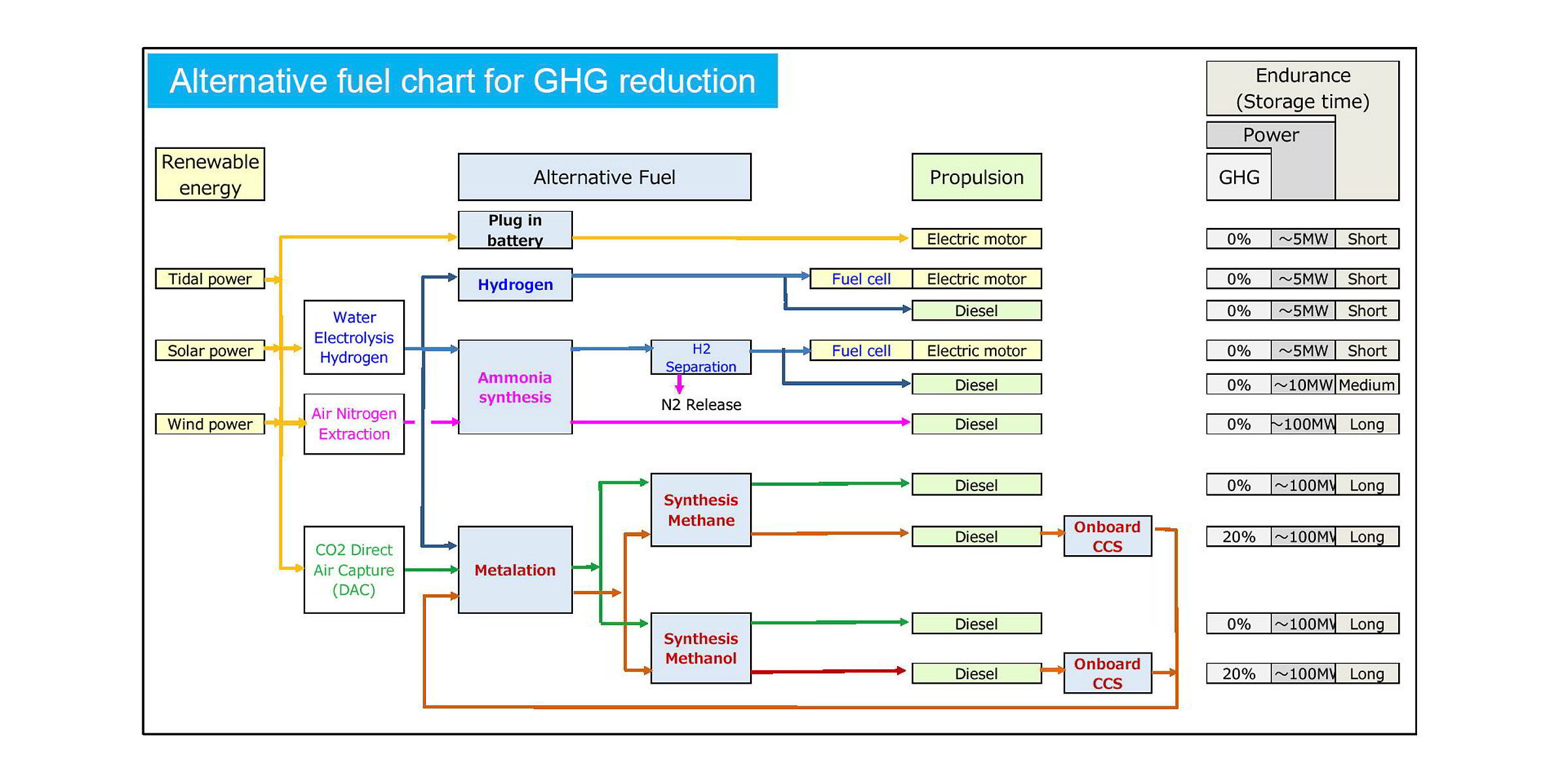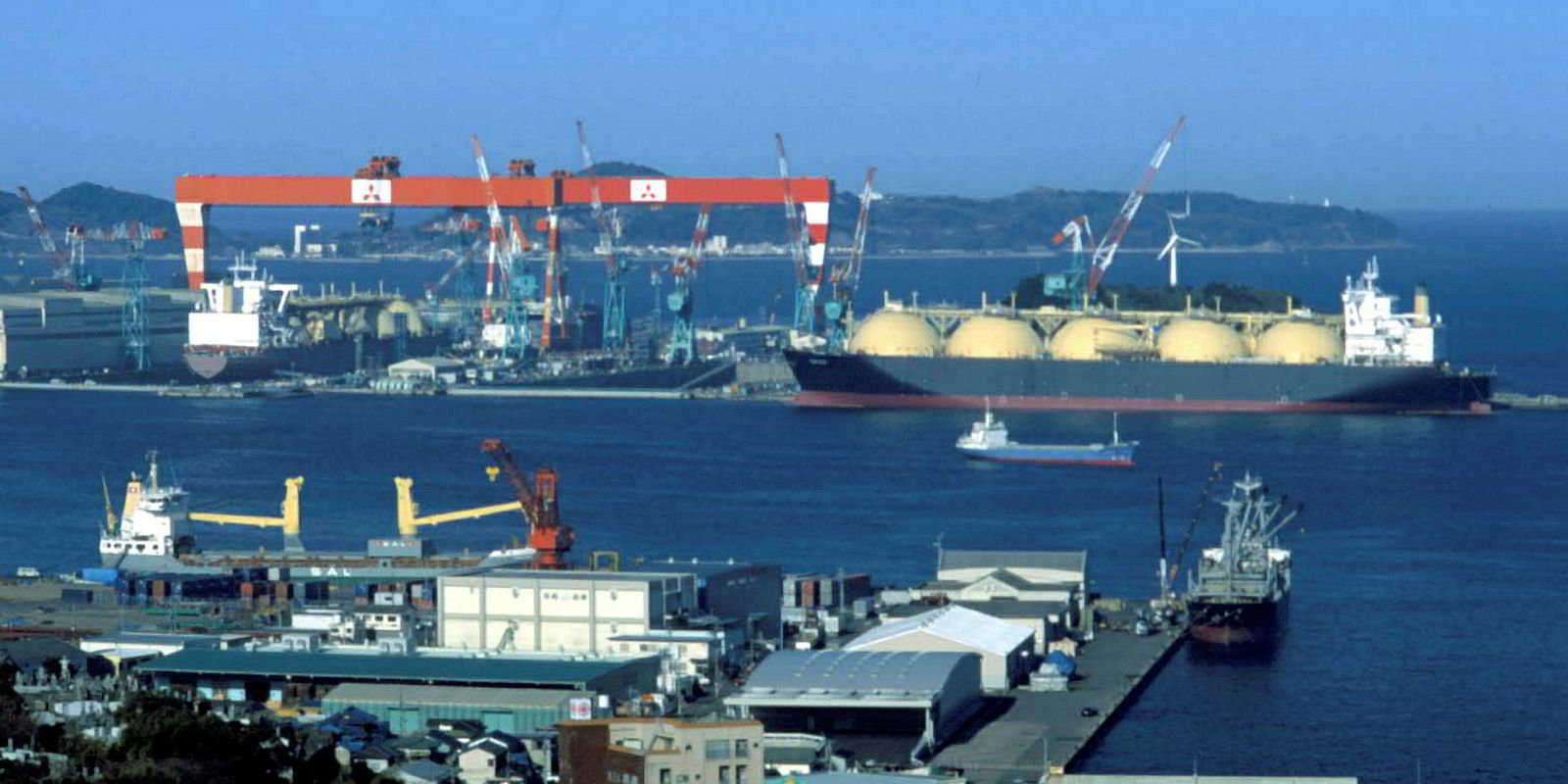Reducing total greenhouse gas (GHG) emissions from shipping by 50% by 2050 from the 2008 levels will be difficult to achieve just by extending the technological improvements already made and using LNG and LPG as a fuel.
Recognising that fact makes a switch to using renewable energy and carbon-free alternative fuels necessary.
Alternative fuels that the Mitsubishi Heavy Industries Group is considering can be seen in the chart, which is an estimate of the candidates that can meet the IMO's target: their manufacturing method, GHG reduction effect prediction when adopted, and the output level and cruising range of ships to which they can be applied.

The types of renewable energy, alternative fuel types, applicable propulsion organisations, and GHG reduction effects are indicated.
Fuel types
In addition, I think there are two types of alternative fuels and options.
The first is using carbon-free fuels —a solution that employs electric energy, hydrogen fuel and ammonia fuel in which CO2 emissions are evaluated as zero.
The fuels are derived directly from renewable energy, hydrogen produced by electricity, or ammonia synthesised from nitrogen that is produced by electricity derived from renewable energy and hydrogen.
The direct use of electricity in plug-in batteries is likely to be applicable only to low-power and short-distance transport due to its low energy density.
But hydrogen fuel has high technical difficulties related to combustion control, cryogenic treatment, and loading, so it can be applied only to low-power and short-distance transport.
Meanwhile, ammonia fuel is toxic, but if it can be safely and directly used by diesel, and it may be applicable to high-power, long-distance transport.
Synthesising solutions
The second solution uses methane or methanol fuel artificially synthesised from CO2 and hydrogen by methanation reaction.
These fuels have already been used in marine diesel engines, and it is possible to continue to use those engines that have established technology. We think it will make a highly efficient propulsion plant.
There are two types of GHG reduction effect depending on the CO2 collection method.
One is to install a device on the ship that captures CO2 from the exhaust gas after combustion in its diesel engine.
If you make methanation fuel from electricity produced from renewable energy sources and the CO2 is recovered, you can recycle it. The efficiency of CO2 recovery equipment means the GHG reduction effect is about 80%.
CO2 capture and storage technology has been proven on land, and we believe that a carbon cycle scheme can be established by combining these technologies
The next method is to collect and use CO2 directly from the air.
In this case, the GHG reduction effect is 100%, but compared with the CO2 concentration in exhaust gas of 4% or 5%, the concentration in the air — at about 0.04% — is very thin, so separation and recovery efficiency is low.
In addition, the operating cost of the equipment is high.
MHI proposes a carbon-cycle scheme by using the second solution explained in the alternative fuel chart.
Methanation technology is not new and some pilot plants are already in operation or testing.
In addition, CO2 capture and storage technology has been proven on land, and we believe that a carbon-cycle scheme can be established by combining these technologies.
Other solutions may include ammonia fuel.
Developed technology related to the artificial synthesis of ammonia, safe transportation and storage methods, and combustion of marine diesel engines may appear on the market relatively quickly because it is a carbon-free fuel.
Takashi Unseki is chief engineer for energy and the environment in
Mitsubishi Heavy Industries' ship and ocean engineering department






